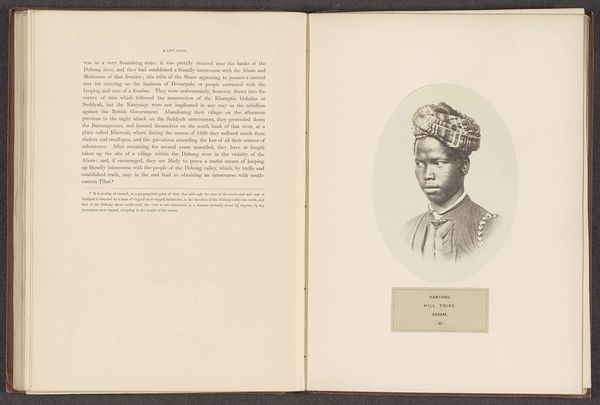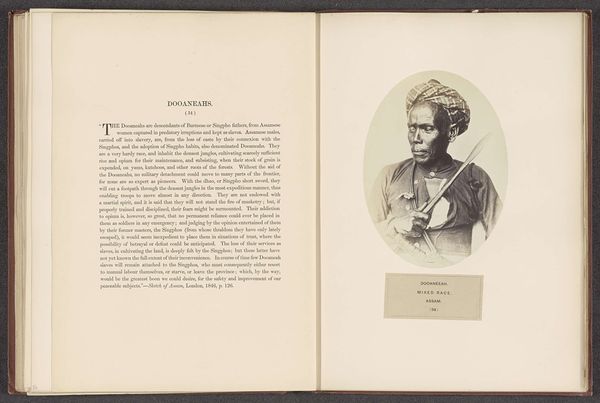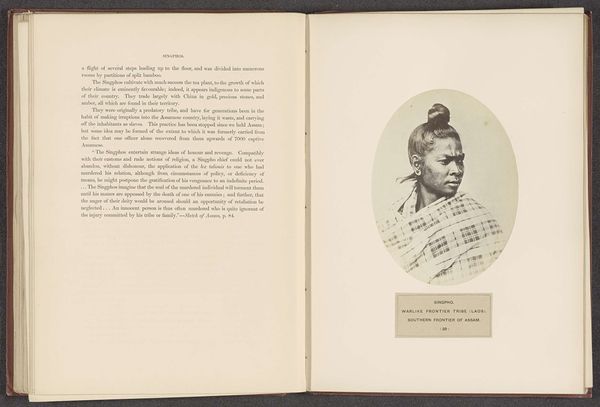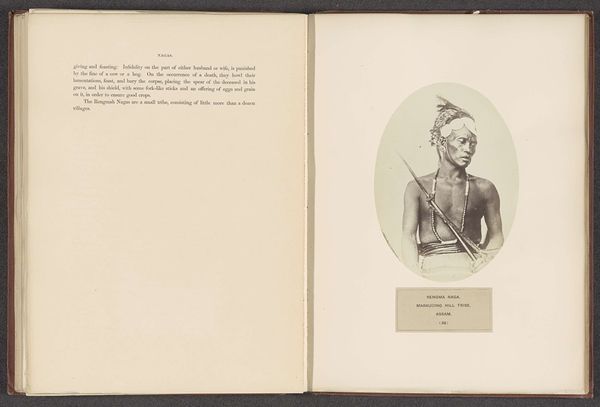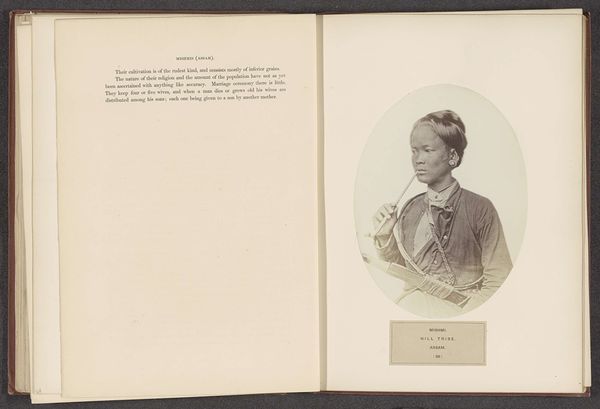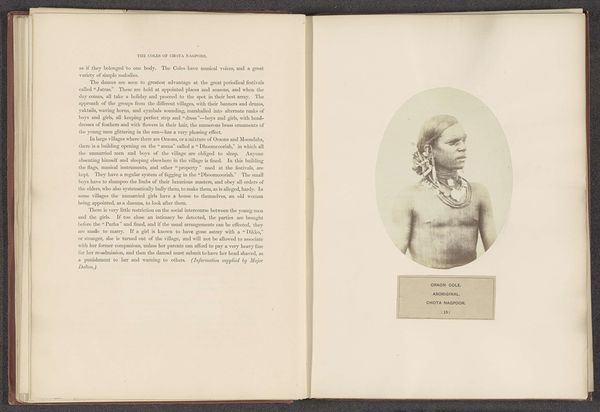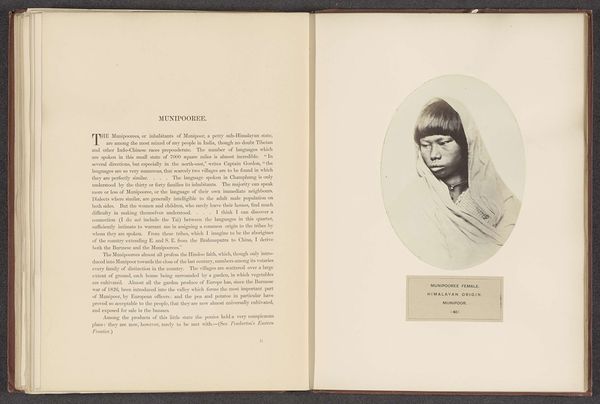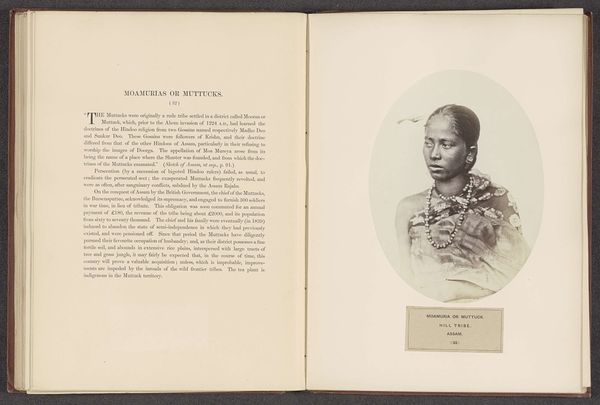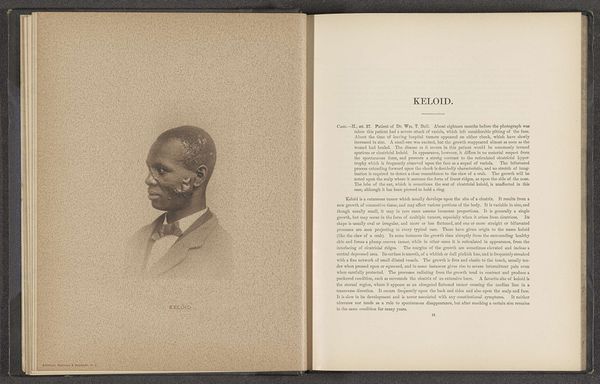
print, photography
#
portrait
# print
#
asian-art
#
photography
#
realism
Dimensions: height 175 mm, width 130 mm
Copyright: Rijks Museum: Open Domain
This is a photographic portrait of an unidentified Miri man from Assam, taken in the 19th century by Benjamin Simpson. Photography at this time was a complex alchemical process. Light-sensitive emulsions were carefully prepared and applied to glass plates, exposed in the camera, and then developed with a series of chemical baths. The resulting image, rendered in tones of grey, captures the man’s likeness and provides a glimpse into his cultural identity. He is adorned with jewelry, including a beaded necklace and large earrings, which suggest particular aesthetic values. These adornments also reflect the skilled labor of the individuals who created these objects, and the social systems that valued and circulated them. Consider also the labor and social context that made the photograph possible. Simpson, as a photographer, was part of a colonial project, documenting the people and customs of Assam. The image serves as a record of a specific time and place but also invites us to reflect on the power dynamics inherent in the act of representation, and the circulation of images in a globalized world.
Comments
No comments
Be the first to comment and join the conversation on the ultimate creative platform.
